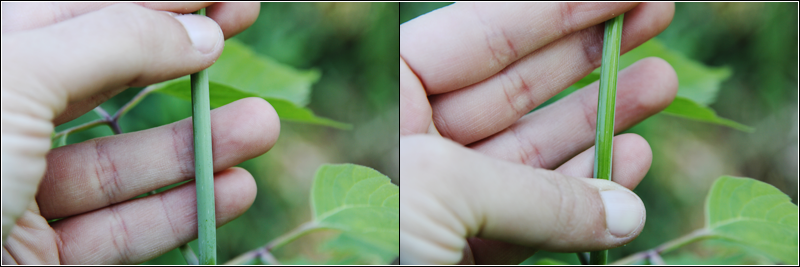

Above demonstrates the glaucous/waxy bloom on a boxelder sapling (Acer negundo). This epicuticular wax functions as a hydrophobic barrier, preventing excess water loss in the new green growth of many plants.
The slippery surface of a waxy bloom can both defend against and attract tiny herbivores (e.g. insects). In some cases there is a mutualistic relationship between the plant and ants adapted to navigate the treacherous surface and protect the plant from intruders. In other cases, the wax surface may lead to the unexpected demise of insects that slip and fall right into the gullet of a pitcher plant.
Federle et al. 1997. Slippery ant-plants and skilful climbers: selection and protection of specific ant partners by epicuticular wax blooms in Macaranga (Euphorbiaceae).
Gaume et al. 2003. How do plant waxes cause flies to slide? Experimental tests of wax-based trapping mechanisms in three pitfall carnivorous plants.